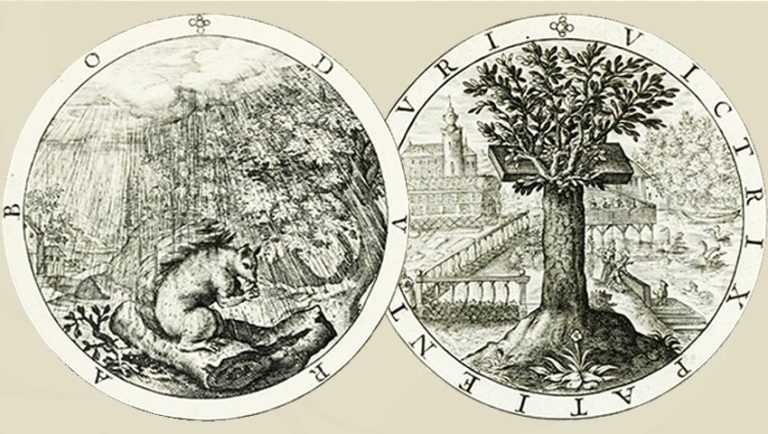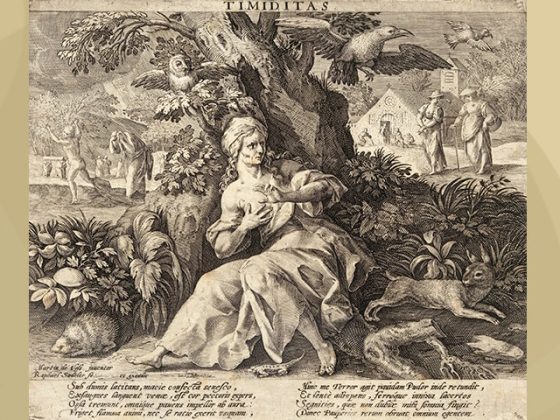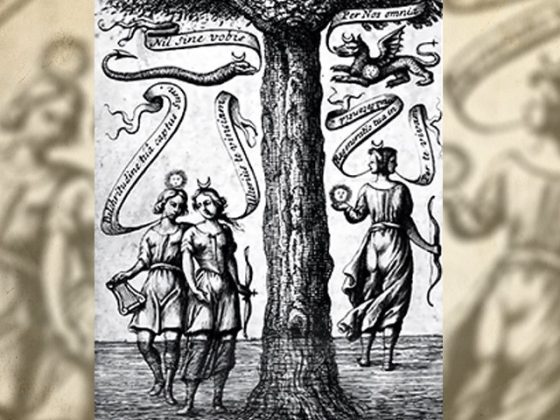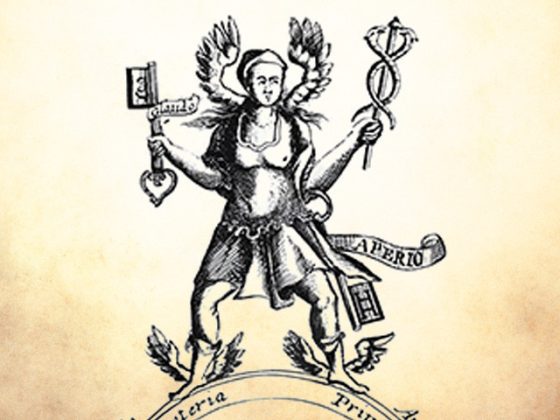Muy querido/a lector/a:
I send you the twenty-sixth and twenty-eighth of a book of poems written by the same German poet Gabriel Rollenhagen (1583-1619), and illustrated by the Dutch engraver, draughtsman and publisher Crispijn van de Passe (1565-1637). The book is entitled Nucleus emblematum selectissimorum, ‘The Nucleus of the Most Select Emblems', published in 1611 in Arnhem, the Netherlands.
The title of this first engraving is…
…DVRABO
─‘I will resist’─
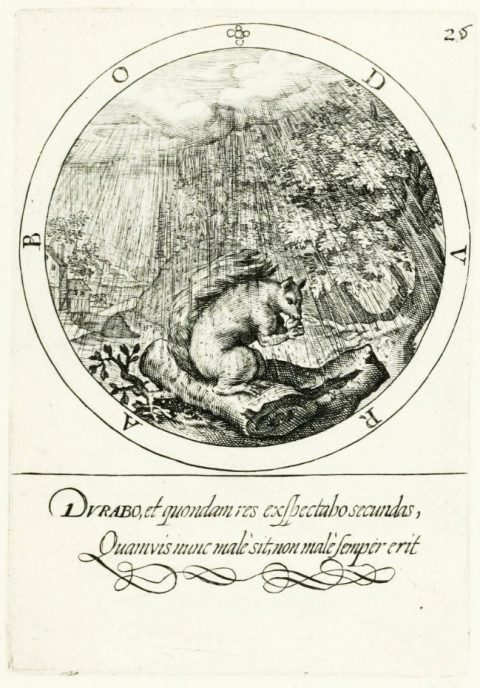
Latin sentence:
DVRABO, et quondam res exspectabo secundas,
quamvis nunc malé sit, non malé semper erit.
Translation: ‘I will resist and wait for favorable circumstances at some point; although things may be bad now, they will not always be bad.'
Celui-la sagement la fortune modere
qui au temps d´infortune meilleur temps espere:
car si ores on voit le ciel d´orages pleine
tost apres on le voit tout tranquile et serain.
Translation: ‘He who in times of misfortune waits for a better time, wisely moderates fortune. For if the sky is now full of storms, soon after everything will be calm and serene.’
Certainly, friends, it is extremely important, within the psychological work that we have to do every day, to KNOW HOW TO WAIT throughout our daily lives for the favorable circumstances to set in motion a certain project that we want to undertake, whether material or spiritual. Most human beings suffer from the lack of two qualities that in another work we have described as KNOWING HOW TO SUFFER and KNOWING HOW TO DIE psychologically.
Nature often gives us examples of what our attitude should be in the face of adversity.
In this engraving, in the center, we see a squirrel in the attitude of eating a nut, despite the fact that a storm rages around it. The squirrel, in its intelligence, oftentimes knows how to wait for better opportunities to eat such fruit, and what is quite moving is to see it saving in various places several of those fruits for later meals that it wants to take further on. We should not despair when everything, apparently, threatens our longings or hopes. Circumstances will not always be the same, we have to give time to time and HAVE PATIENCE because time passes quickly and, when we thought we were cornered, the next day we can be surprised to see the panorama that surrounds us totally changed, different.
I have known cases of people who, caught up in the web of their passions, moved by some circumstances, chose suicide, to take their own lives, and the next day the news came out according to which this deceased had been the winner of the first prize of the profane lottery. How was it useful for that person to commit suicide?
Humanity does not know the Law of the Pendulum. According to this law, everything is subject to change, abrupt or slight, good or bad, but all of this is part of the relativity of existence. Many complain about the global climate in this or that region of our world, but, to the AMAZEMENT OF THOSE WHO COMPLAIN, the next day they find a total change in the weather that they had not even suspected. Such are many of the circumstances of our existence…
Second emblem:
VICTRIX PATIENTIA DVRI
─‘Patience is victorious in difficulties’─
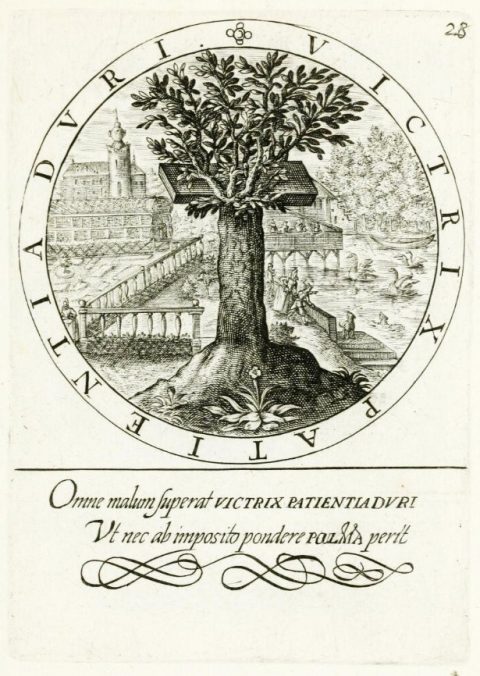
This other engraving directs our attention to a central figure made up of an olive tree whose leaves protrude from a heavy stone that is crushing the plant. The force of Nature is known to seek to expand despite the difficulties it encounters in its development. This draws a lot of attention from scholars and people in general, because they do not expect to see the leaves of an olive tree multiply when a huge, very heavy slab presses on them trying to stop the growth of the vegetation.
The heavy load is between the trunk of the tree and its flowering part, and yet the branches of the tree continue on their way.
This is the reason of the title of this engraving: Patience is victorious in difficulties…
Obviously, dear readers, here is a great lesson that Mother Nature teaches us not to succumb to the difficulties that beset our existence. We have to cultivate patience to the last drop of our energies to face the daily carousel of what we call existence…
The Latin sentence tells us:
Omne malum superat Victrix Patientia Dvri
Ut nec ab imposito pondere palma perit.
Translation: ‘All evil is defeated by the victorious patience in difficulties, so that the palm tree does not perish because of the weight that is imposed on it'.
The sentence in French:
De mesme que tu vois une palme umbrageuse
contre la pesant faix se dresser genereuse:
Ainsi par patience, on dompte le malheur,
et de luy triomphant, on en reste vainqueur.
Translation: ‘Just as you see a gloomy palm tree rising generously against the heavy burden, so, with patience, misfortune is tamed, and by overcoming it, we emerge victorious.'
First of all, patient reader, the palm tree laden with a weight is nothing new. There is even a Latin saying that goes like this: PALMA SUB PONDERE CRESCIT, ‘the palm tree grows under a weight', which is usually understood as a reference to the fact that, when something does not kill us, it makes us stronger. But it is also part of the symbolism of this tree that, once it is freed from a weight that bent it ─and that did not break it, since the palm tree is very flexible─, it becomes perfectly straight again.
This is part of the multiple symbolic values of the palm tree, which is connected to countless symbols from various cultures:
- To the Egyptian Goddess Hathor.
- To the birth of the God Apollo.
- It appears in the Bible and in the Qur'an.
- In ancient traditions, it represents the union of the masculine ─the tall and straight trunk that represents the phallus─ and the feminine ─the leaves and fruits on top─.
- It is connected with the aspiration to rise to heaven with spirituality.
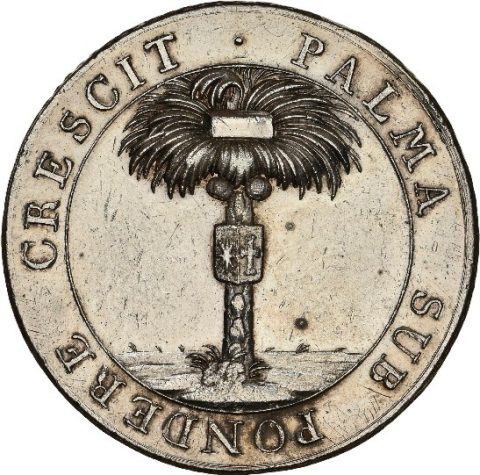
Here I send you an image of a German coin where you can see a palm tree laden with a weight, which shows that the symbolism of the engraving is well known:
It is also to be noted very well that the one on the present coin is a real palm tree, whereas, as I have already written, the engraving does not depict a real palm tree. The tree depicted in the engraving appears to be an olive tree given the appearance of its leaves. And, if we look at the way the trunk and the slab intersect, they make a cross that bears fruit above. Also the flower below has four petals in the shape of a cross, and if we think that the cross of the divine Aberamentho was made of olive wood, it would make sense that the tree depicted is an olive tree.
It should also be noted that on Palm Sunday it is said that Jesus was welcomed with palm branches, but in the West olive branches have always been used.
I now give you a few quotations for your reflection:
“Philosophy is the story of human error with a few sparks of light.”
Othon Gruppe
“The wise man should be content with the name of philosopher.”
Pythagoras
“Philosophy is the desire to know what exists.”
Plato
“A little philosophy distances us from religion. A lot of philosophy brings us back to it.”
Hebbel
“True philosophy is nothing other than the study of death.”
Newton
SIC TRANSIT GLORIA MUNDI
─‘Thus passes the glory of the world'─.
KWEN KHAN KHU


